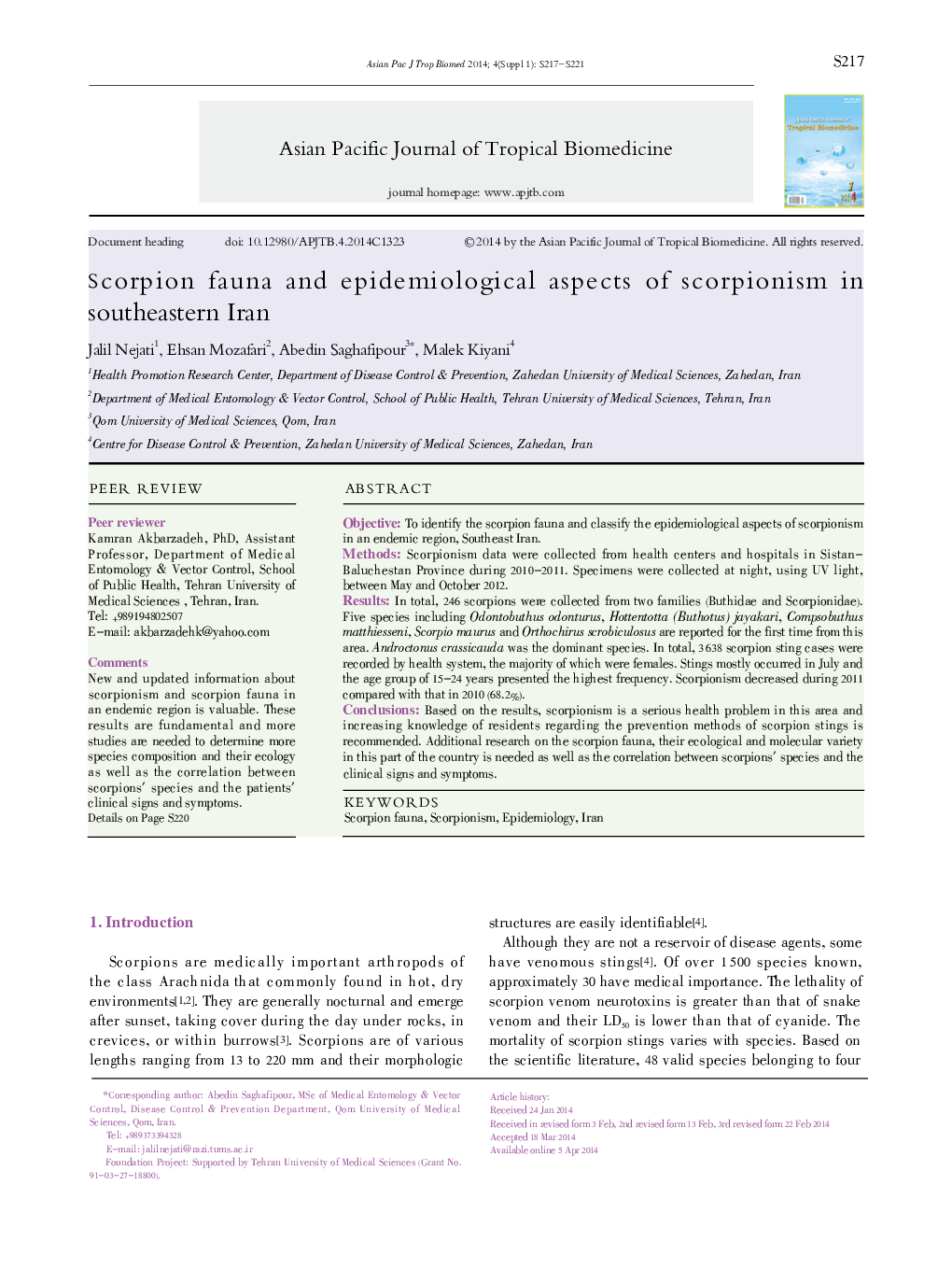| Article ID | Journal | Published Year | Pages | File Type |
|---|---|---|---|---|
| 2032801 | Asian Pacific Journal of Tropical Biomedicine | 2014 | 5 Pages |
ABSTRACTObjectiveTo identify the scorpion fauna and classify the epidemiological aspects of scorpionism in an endemic region, Southeast Iran.MethodsScorpionism data were collected from health centers and hospitals in Sistan-Baluchestan Province during 2010-2011. Specimens were collected at night, using UV light, between May and October 2012.ResultsIn total, 246 scorpions were collected from two families (Buthidae and Scorpionidae). Five species including Odontobuthus odonturus, Hottentotta (Buthotus) jayakari, Compsobuthus matthiesseni, Scorpio maurus and Orthochirus scrobiculosus are reported for the first time from this area. Androctonus crassicauda was the dominant species. In total, 3 638 scorpion sting cases were recorded by health system, the majority of which were females. Stings mostly occurred in July and the age group of 15–24 years presented the highest frequency. Scorpionism decreased during 2011 compared with that in 2010 (68.2%).ConclusionsBased on the results, scorpionism is a serious health problem in this area and increasing knowledge of residents regarding the prevention methods of scorpion stings is recommended. Additional research on the scorpion fauna, their ecological and molecular variety in this part of the country is needed as well as the correlation between scorpions' species and the clinical signs and symptoms.
